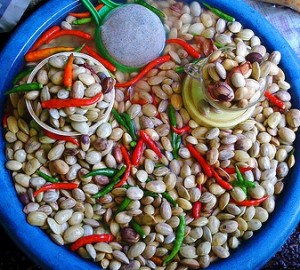In the latest report, the H7N9 bird flu appears to be evolving, and could be mutating to a form that could be passed easily from person to person.
H7N9 flu has caused 131 known cases in humans, 32 of whom died, since it emerged in February this year. Tests continue to show that while the virus is a very rare infection of birds in live poultry markets, it is circulating and evolving. But the infection is so rare that those birds can't be passing the virus to enough other birds to keep it circulating. This means it must also be carried, less rarely, by some other animal – so far unknown
World Health Organization officials said yesterday that there was no new case since May 8, partly because Chinese authorities have culled the poultry spreading the virus. Some live bird markets have been closed, as well.
"It has given us a breather while we look more closely at this virus," says William Schaffner, an influenza expert and professor at the Vanderbilt University School of Medicine.
WHO officials say nearly everyone with the H7N9 virus contracted the flu from poultry, such as those sold at live markets.
But judging from a handful of cases, the new virus does seem capable of spreading from person to person within households, where people are in very close contact, says Arnold Monto, an influenza expert and professor of epidemiology at the University of Michigan School of Public Health.
Doctors in China have documented 131 cases, along with 36 deaths, giving H7N9 a fatality rate of 27%, according to the World Health Organization.
In comparison, the H5N1 bird flu, which broke out in 2004, killed about 70% of victims, Monto says.
The number of deaths in the latest outbreak is likely to rise, given that some patients remain hospitalized, according to a study in Wednesday's New England Journal of Medicine.
Researchers don't know the true number of cases, because it's possible that some infected people fail to develop symptoms, or have symptoms too mild to send them to a doctor, according to the study.
Among people hospitalized with the new bird flu, nearly all had pneumonia-like symptoms, according to the new report, written by Chinese doctors at Zhejiang University and Guangzhou Medical University. Most patients had a fever and cough.
About 88% of patients had low white-blood-cell counts and 40% had low platelet counts, which can lead to bleeding, the report says. About 14% of patients had diarrhea or vomiting. Some had kidney damage and others had muscle breakdown.
The H7N9 is different from other recent viruses, Schaffner says.
• Birds infected with the new virus don't appear sick, making it more difficult to measure the virus' spread, Schaffner says. With the H5N1 bird flu, many infected birds died quickly.
• So far, the new bird flu seems mostly limited to chickens. The older bird flu, H5N1, also spread to wild birds, who helped carry the virus quickly to birds throughout Asia, Schaffner says.
• With H1N1 swine flu, which struck in 2009, older people had some immunity from previous swine flu pandemics, Schaffner says.
But everyone on the planet would be susceptible to either bird flu, Schaffner says.
Humans have never experienced a virus like H7N9 before, says Monto, who was not involved in the new study. It's concerning, he says, that H7N9 is "semi-humanized," with a number of genetic changes that make it closer to spreading easily.
H7N9 first emerged in China in March, and seems to follow the typical pattern of seasonal influenza, Monto says.
But H7N9 cases could rise again in the fall, as the regular flu season returns, Monto says.
In the meantime, scientists in the USA are working on a vaccine. Because the virus is so different, people would likely require two doses of vaccine, Monto says. The vaccine would also likely need to be supplemented by an adjuvant, a substance that increases the immune response.
Source:











